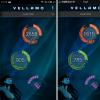Autofocus, including tracking, in comparison with manual focusing, is a preferable setting. In the hands of an experienced photographer, autofocus works much faster, and most importantly, more accurately than the average amateur photographer can do. However, autofocus is not such a simple thing as it might seem at first glance, but it should also be said that this is already a fairly deep jungle, into which they do not immediately enter.
Let's look at how to use autofocus, as well as the subtleties that will allow you to effectively control it and get the best possible result.
To get started, I recommend that you reread the autofocus pages of your camera's manual for a great start. For normal perception of the material, you need to know and understand where and how the main controls for autofocus and focus points are located.
Autofocus modes
Most cameras, including Canon and Nikon, are equipped with three types of autofocus modes: single, tracking and hybrid autofocus.
Single or spot autofocus
This mode is intended for photographing still scenes such as portrait, landscape, still life, etc. In this mode, when you half-press the shutter button, the lens starts focusing on the subject that is located within the selected focus point. After focusing is complete, the focusing operation is locked, allowing you to re-compose the frame (when the distance to the subject changes, focus is lost) and take the frame.

Understanding this topic, you need to understand that the lens focuses not on the subject, but at a certain distance. A very simple conclusion follows from this. If I focus on an object that is at a distance of five meters, then, accordingly, all other objects at a distance of five meters fall into the field of focus. In other words, after focusing and locking the autofocus, keeping the distance to the subject, I can turn the camera as I like, getting the composition that I need, while not losing focus.
This method is very good in cases where the distance to the object is large enough and measured in meters. At close distances, especially in macro photography, recomposition of the frame, which can entail a change in distance by several centimeters or millimeters, leads to a noticeable loss of focus, which is even more critical with a narrow depth of field.
AF tracking mode
This mode is also called continuous, it is simply irreplaceable when photographing dynamic objects - animals, sports, auto racing, etc. As long as the shutter button is half-pressed, autofocus works continuously, thereby keeping the subject in focus. Naturally, autofocus locking, as in the previous version, does not occur, which is due to the constant movement of the lens mechanism, which catches focus following the movement of the subject.
An obvious conclusion suggests itself. In this shooting mode, you cannot change the composition. This is because autofocus reacts to a subject in front of a specific focus point, if you change the composition, the subject will be lost and focus will be on something else.

So, we understood what tracking autofocus is, now there is the last mode - automatic or hybrid. It was created in order to decide for yourself whether you need to block autofocus or not. This mode, unlike other automatic camera functions, seems strange and useless to me, but this is my subjective opinion, perhaps someone will find usefulness and convenience in it.
Release or Focus Priority
For many newbies, the existence of such settings will seem surprising. But they exist and it is simply not possible not to pay attention to them when analyzing autofocus. The first of the priorities (release) means that at the moment the shutter button is fully pressed, the sharpness does not matter, in other words, the control over this is completely entrusted to the photographer. This mode is enabled by default for tracking autofocus.
Focus priority means that after pressing the shutter button fully, there should be a focus on specific or specific focus points. If this is not the case, then the camera will not allow you to take a picture. This mode is usually enabled with standard settings in single shot mode.
Contrast and phase detection autofocus, which is better?
In digital cameras, manufacturers use two types of autofocus, as you already understood from the name, these are contrast and phase autofocus. It will be very good if we understand these concepts.
Contrast autofocus system
This autofocus method is used in so-called digital cameras and SLR cameras, but only when the Live View function is enabled. This type of autofocus does not require additional focusing sensors, since it uses exclusively the camera matrix for focusing. The picture, which comes from the matrix of the camera, is analyzed by the processor of the camera for the presence of contrast changes. If more precise focusing is required, the processor instructs the motor to slightly change the position of the objective lenses in any direction. If after this manipulation the contrast of the image decreases, then the direction of movement of the lenses is reversed. The movement in the right direction continues until the contrast starts to drop again, reaching this limit, the processor tells the motor to return the lens to the step at which the contrast was maximum. Upon reaching this value, focusing is considered complete.
As you understand, due to such features of autofocus operation (it is not known in which direction the motor should be rotated), a lot of unnecessary movements are made. That leads to the main disadvantages of this focusing method - low speed, which does not allow using it on professional cameras. The second minus, maybe not so critical, is the increased power consumption.
The advantages of this method are the simplicity of the design and the ability to focus almost anywhere in the frame.
Phase detection autofocus
As you understand, the manufacturers of photographic equipment have long answered us and themselves to the question of which autofocus to choose. Of course, the phase system won. Let's see why this is so.
This type of autofocus is used in digital SLR and film cameras. There is little interference in the optical image transmission system, so in addition to the main mirror, the camera is equipped with an additional mirror, which transmits part of the light to the phase detection autofocus module. Any light beam that passes through the beam splitting prism and microlens is split into two beams, each of which is then directed to the autofocus sensor. If focusing is accurate, then the beams fall on the sensor at a strict distance from each other.

If the distance between the beams is less than the reference one, then the focus is brought closer than necessary (front focus).
![]()
If the distance is greater, then the focus is accordingly farther (back focus).

In this case, the amount of shift indicates the distance from the ideal focus. Thus, the processor immediately receives information about in which direction and how much it is necessary to adjust.
Phase-detection autofocus sensors can be cross-shaped and linear. Linear are also divided into vertical and horizontal. The latter are sensitive to vertical lines (tree trunks, fence), and vertical ones are more sensitive to horizontal objects (horizon, road). Accordingly, cross-shaped sensors are versatile, they are sensitive to objects of any shape. You can find out exactly which sensors and where they are located from the instructions for your camera, but the most sensitive sensor is located in the center of the frame.

The main positive quality of phase detection autofocus is its speed, which makes it indispensable for shooting action scenes. The main disadvantages are complexity, cumbersomeness, the need for the finest alignment of all components, less accuracy than contrast autofocus and a small number of focusing points.
Hybrid system
There is also a third type of autofocus - hybrid. From the name it becomes clear that this is a combined system that includes the qualities of both systems described above. This type of autofocus is used in mirrorless and some DSLR cameras.
The essence of this system is that the sensors are mounted directly into the matrix. Due to this, focusing occurs according to the following system. First, the basic focus focuses on the phase detection autofocus, and then, based on the obtained data, contrast begins to work. At the same time, the sluggishness of contrast autofocus is reduced by more than 75%. Phase detection autofocus does not require such precise alignment, and the entire system takes up much less space.
Having analyzed all the technical aspects of autofocus operation, I would like to conclude with a few more words about those factors that also affect its operation:
Lens aperture. Here everything is as always, the higher the aperture, the better the autofocus works.
Focal length. Everything is quite confusing here, but in a nutshell, the larger the focal point, the more visible any autofocus miss. In addition, there is shaking, breathing and other factors. I draw a conclusion that the longer the focal length, the worse the autofocus works.
Detail and illumination of the image. The less detail and light in the focus point area, the worse the autofocus performance.
The photographer himself, or rather your ability to use your technique. If a person speaks skillfully, then everything works, but if carelessly and incorrectly, then even the most modern autofocus system will miss.
The most important thing in your autofocus work is practice. The correct balanced approach to the work of automation will give you the opportunity to focus quickly and efficiently. What is actually necessary.
Successful photos to you!














